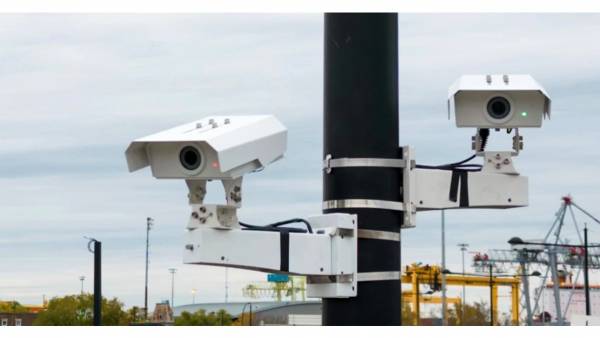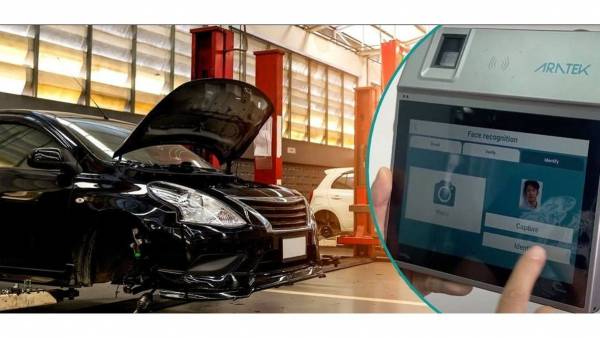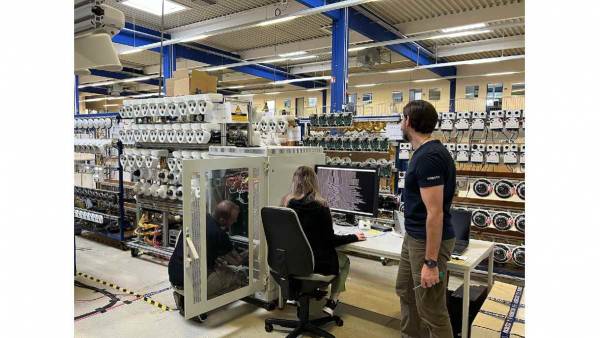by Axis Communications
The introduction of network video has revolutionized video surveillance in many ways. Video surveillance systems over IP offer significant advantages, such as much higher image quality, better scalability, event management, intelligent video and, in many cases, a lower cost of ownership. However, it is too early to say that this development has already rendered analogue CCTV systems obsolete and unusable.
This change in technology does not force security directors to choose as soon as possible between an IP surveillance system and an analog video surveillance system. It is actually possible to combine both systems in order to preserve the investments made, while enjoying the benefits of IP technology and creating a future-proof platform. The solution lies in video encoders.
Technological change
Video encoders, also called video servers, contain a compression chip and operating system so that analog inputs can be converted into digital video, as well as being transmitted and recorded over the computer network for easy viewing and accessibility. However, to ensure all the benefits of IP, the requirements of video encoders are – or should be – high. If chosen well, a video encoder can make a system with cameras
Analog CCTV offers many of the features and functionalities in principle reserved for IP-based systems.
The industrial argument for video encoders is weighty. Approximately 95 percent of the estimated 40 million surveillance cameras installed in the world are analog. If we take into account that the useful life of an analog surveillance camera is between five and seven years on average, many of them will continue to work for a while. But for some operators the most important thing is the money they have invested in installing coaxial cable. In buildings without Ethernet infrastructure, the user is likely to prefer to avoid or, at a minimum, postpone another investment in a modern network.
Video encoders are a key component in this process of conversion by the market from analog video surveillance systems to networked systems. The market has already experienced a similar technological change, although more restricted, when the digital video recorder (DVR) replaced the videotape recorder (VCR). With DVRs, no more having to change tapes, improved image quality and simplified the search for exact video sequences in the stored material.
The scope and functionality of DVRs have evolved over time. Despite this, they have only come to offer a small part of the benefits that can be obtained from full-fledged network video systems. With DVRs, video is still stored on proprietary equipment, so integrating with the ever-growing market for video and network management applications becomes challenging. DVRs also offer limited scalability.
How to get advanced and important features
A video encoder converts and compresses analog video signals into a video stream that is identical to that supplied by a network camera, allowing it to be fully integrated into a network video system. This allows users to view live images from any local or remote computer that is on a network. A video encoder can also offer a multitude of functionalities
advanced, such as motion detection in distributed video, tampering alarm, event management and integrated audio support. In addition, it provides a foundation for other smarter video functionalities such as license plate recognition, people counting, etc.
Many video encoders incorporate a pan/shift and zoom (PTZ) control that allows cameras to be controlled over the network using a mouse or remote. And if the video encoder supports Power over Ethernet (PoE), both the encoder and the analog camera connected to it may be powered through the same cable used for data transmission. This can result in substantial savings since the installation can be done without power cables.
As for image quality, some video encoders provide an image adjustment as well as an aspect ratio correction that ensures that the image does not appear distorted when viewed on a PC screen. High-performance video encoders provide full frame rate (30 ips in NTSC, 25 ips in PAL) in all resolutions for all video channels. In addition, and unlike their analog counterparts, digital images retain their quality regardless of the distance traveled.
The most common video encoder is a standalone version with one- or multi-channel connections for analog cameras. Standalone video encoders should be placed well close to analog cameras. They are usually used in situations where there are several analog cameras located in a distant building or where the configuration is at a certain distance from the central control room.
For larger centralized systems, high-density rack solutions with card-version encoders are often preferred. The cards support one, four or six channels. The racks can be equipped with a mix of card video encoders and accommodate anywhere from one to 84 analog channels, providing a flexible and scalable solution for migrating large-scale analog installations to network video. Hot swap allows you to install or remove the card video encoders without having to shut down the entire system.
Scalable and flexible
The introduction of video encoders improves scalability and flexibility. In an IP system it is very easy to incorporate new cameras and change their site; this facilitates both the installation and a possible expansion of the system. As recording and management are done with standard computer equipment, the operator can choose from a multitude of manufacturers and suppliers whenever they need more storage space or need to upgrade other parts of the infrastructure.
Unlike CCTV/DVR systems, network video surveillance is based on free and interoperable standards; video encoders use universally accepted compression standards, such as Motion JPEG, MPEG-4 or H.264, which means great savings in bandwidth and storage. By using standards, operators do not run the risk of getting stuck with a patented technique. It also allows integration with other systems such as IP-based building management systems or industrial and logistics solutions. The possibility of combining and integrating different systems allows you to make the most of the investment made in network video surveillance.
How to create a future-proof system
Video encoders offer a very valuable solution to meet the challenge of migrating analog video surveillance from CCTV to IP surveillance. This is especially true in the case of those facilities where there may be a large number of analog cameras, which represent a huge investment that must be taken care of. By using video encoders in an analog video surveillance system, a security director can get many useful features from a network video system while retaining their previous analog investments.
In addition, a more upgradable video surveillance system is created that allows users to incorporate network cameras and benefit from all the advantages of a network video system, such as high-resolution video with progressive scanning, megapixel resolution and HDTV image quality.
Closer: the evolution of video surveillance systems
•Traditional analog CCTV systems based on VCR are made up of analog cameras, coaxial analog cabling, quad/multiplexer, monitor and VCR
•An analog CCTV system based on DVR does not have quad/multiplexer or VCR, this type of solution connects to a DVR, which includes the quad or multiplexer function and provides digital recording. The introduction of the DVR system offers great advantages such as no tapes or tape changes needed, constant recording quality and the ability to quickly search the recorded video.
•Analog CCTV systems based on network DVRs: in this system the analog cameras are networked using a network DVR to remotely monitor the recorded or live video. As advantages of this solution you have the distant control of the video through a PC and the remote operation of the system
•When using encoder-based network video systems, images are transmitted continuously over an IP network. A video encoder is used as a key element to migrate the analog security system to an open IP-based video solution. A network video system based on video encoders features the following attributes:
> Using Standard Network and PC Server Hardware for Video Recording and Management
> The system is scalable in one-camera upgrades at a time
> Ability to record outside the center
> Options for Distributed Intelligence
> Easier to integrate with other systems such as POS (point of sale) and building management
> Ability to use Power over Ethernet
> Future-proof, as this system can be easily expanded by incorporating network cameras
•In network video systems based on network cameras, video from network cameras is transmitted continuously over an IP network. This system takes full advantage of digital technology and provides consistent image quality from the camera to wherever the operator is; it also provides different benefits such as:
> Ability to use high-resolution cameras (megapixel and HDTV)
> Consistent image quality, regardless of distance
> Ability to use Power over Ethernet and wireless functionality
> Full access to features such as horizontal/vertical movement and zoom, digital and audio inputs and outputs via IP, as well as video
> Camera settings and system settings over IP
> Complete flexibility and scalability.

























Leave your comment